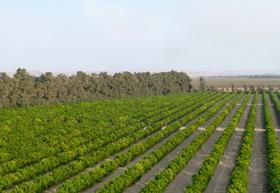
Citrus production in the Southern Hemisphere is set to increase by 18 per cent to 7.1m tonnes this year according to the latest estimates from the Southern Hemisphere Association of Fresh Fruit Exporters (Shaffe). Despite the sharp rise, exports are forecast to remain broadly flat, increasing by just 1.7 per cent to 2.6m tonnes.
The figures exclude Chile, which is in the processing of readjusting its estimates in the wake of the recent drought.
The higher production volume is due mainly to the recovery in Argentine production following last year’s shortage, but this will not be translated into higher exports due to the general macroeconomic conditions that continue to affect the competitiveness of the country’s exports, Shaffe said.
The estimates were released during a joint meeting between Shaffe and Freshfel which took place on 20 April.
Lemon exports are expected to see the biggest rise, climbing 4 per cent to 436,000 tonnes, while soft citrus and grapefruit will increase by 3 per cent to 424,000 tonnes and 230,000 tonnes respectively. Orange exports are set to rise by 0.3 per cent to 1.35m tonnes.
In Australia, mandarin output is expected to rise by 25 per cent due to favourable growing conditions and new plantings reaching maturity, coupled with 2015 being an “on year”. Lemon production is also increasing rapidly, while the country expects to see an average Navel crop through the peak season, with lighter volumes towards the end of the late Navel season.
In Peru meanwhile, the Satsuma harvest will be lower this year, although some of the shortfall will be offset by new cultivation areas coming into production. The country’s Minneola acreage continues to decrease while plantings of late mandarins is increasing. Shaffe warned that the El Niño weather phenomenon could jeopardise Peru’s lime production.



